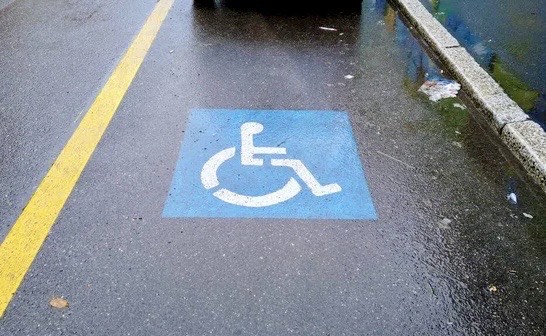Minneapolis is seeking responses from the community on how to improve the city’s accessibility for those with disabilities.
Over 300 survey responses from an Americans with Disabilities Act (ADA) meeting on Monday showed respondents gave the city a B grade for accessible programs and services. Of the respondents, 73% said facilities for people with disabilities are somewhat accessible and 50% said participating in city activities is challenging.
Community members expressed concern during the meeting and in the survey over the lack of parking near city buildings and parks, white bollards blocking corners of sidewalks and a lack of language accessibility options, according to the slides.
David Fenley, the ADA director of the Minnesota Council on Disability, said the push for a car-free society is positive, but it leaves out people who need cars to get around.
“If you eliminate drive-thrus in the city, there are people who rely on drive-thrus because maybe they can’t get out of their car or maybe it takes them 20 minutes to get out of their car,” Fenley said. “Eliminating drive-thrus essentially tells these people, ‘All right, you don’t really matter to us anymore.’”
The city laid out its plans to improve accessibility, which included improving building accessibility, hiring bilingual staff and creating more accessible websites and videos, according to the slides. Part of that plan also included coordinating action and transition plans by bringing in other agencies like Metro Transit.
Deputy Director for the Neighborhood and Community Relations (NCR) Department Nick Ngo said the ADA’s plan connects people with the services they need and creates services if they do not already exist. Adding closed captioning and American Sign Language to city council proceedings, updating websites and adding a public service building are a few things the plan has already done.
Ngo said the department makes sure to involve the community every step of the way.
“We have people-based engagement, and that is our community specialists around a team of folks that work with, liaison with, build relationships with our most underrepresented and historically underserved communities, such as African American, East African, Southeast Asian, Latino, American Indian, folks that are seniors and people with disabilities as one of them as well,” Ngo said.
A new action plan is underway, but building up a point of contact with someone in the city is an important part of work, said Guthrie Byard, the community specialist for people with disabilities in the NCR department.
“There’s not a hard and fast deadline,” Byard said. “It’s really important that we kind of move at the speed of community and that we take the time to get the feedback from the community and that we don’t rush things.”
Ngo said improving city accessibility will require more than just the NCR department.
“Our relationship, partnerships and collaborations with the community and our city partners and colleagues are essential just to make sure that we make this a city more accessible and inclusive for people with disabilities,” Ngo said.









Susan Lasoff
Jun 24, 2024 at 10:08 am
The City should employ a professional experienced in Accessible and Universal Design, to review all plans for new construction and remodeling of existing facilities and environments.
Joan Willshire
Jun 21, 2024 at 3:37 pm
The city needs to start with the sidewalks as they are atrocious! Sidewalks for people with disabilities are our freeways literally. The city is not repairing sidewalks like they used to and when they do, they usually just put up a clump of asphalt on the crack, and now they just created another obstacle with that clump of asphalt on top of it.